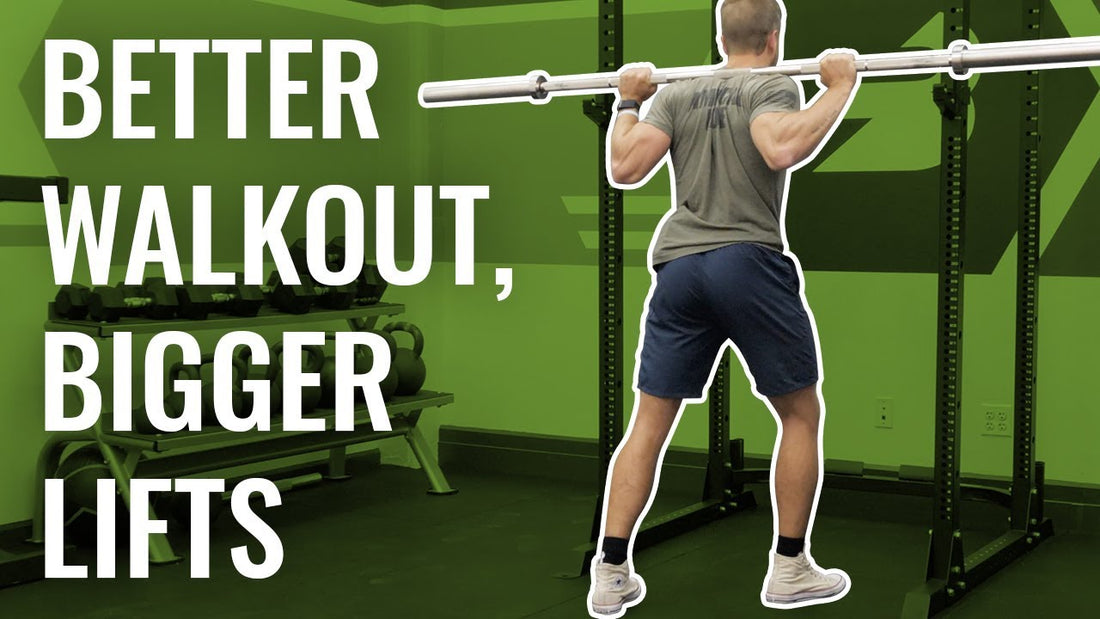
The Squat Walkout: Mastering the First Step to a Bigger Squat
In a powerlifting competition, your squat doesn't begin when you descend; it begins the moment you unrack the bar. The squat walkout is a critical, high-stakes skill that sets the stage for the entire lift. A sloppy, inefficient walkout can drain your energy, break your tightness, and ruin a lift before it even starts. Conversely, a crisp, automatic, and powerful walkout builds confidence and preserves every ounce of strength for the squat itself. This guide will break down the technique for a perfect, competition-ready walkout.
Why the Walkout is So Crucial
The walkout is the transition from a supported bar to an unsupported one. Your goal is to do this while expending the absolute minimum amount of energy.
- Preserves Tightness: A good walkout maintains the full-body tension you created during your setup.
- Conserves Energy: Fewer, more efficient steps mean less wasted energy.
- Builds Confidence: A smooth, stable walkout makes a heavy weight feel manageable and puts you in a powerful mental state.
- It's a Required Skill: Unless you compete in a federation that uses a monolift, the walkout is a non-negotiable part of the squat.
The 3-Step Walkout: The Gold Standard
For most lifters, the 3-step walkout is the most efficient and stable method. It involves one small step back to clear the rack, followed by two steps to set your stance.
- The Unrack: Get under the bar and create maximum tension. Use your breathing and bracing technique. Stand up with the weight decisively. Let the bar settle for a moment.
- Step 1 (Clear): Take a short, deliberate step back with your non-dominant foot, just enough to clear the J-hooks.
- Step 2 (Set Width): Take your second step back and out with your dominant foot, setting it to your competition stance width.
- Step 3 (Match): Take your final, smaller step with your non-dominant foot to match the other side, making minor adjustments to your foot angle.
- Settle and Squat: Once your feet are set, let the bar settle, take your final breath, and wait for the "Squat" command.
This technique is a staple taught by many of the world's best coaches, including those at Juggernaut Training Systems, for its efficiency and repeatability.
Common Walkout Mistakes
- Too Many Steps: Taking 4, 5, or 6 small, shuffling steps is a massive energy leak and makes it difficult to find a consistent stance.
- Losing Tightness on the Unrack: Standing up softly or letting your upper back relax after unracking.
- Stepping Too Far Back: A long first step can throw off your balance. The first step should be just big enough to clear the rack.
- Rushing the Setup: Not taking a moment to let the bar settle on your back before and after the walkout.
Drills to Perfect Your Walkout
- Practice Every Rep: Treat every single rep of every squat workout, from the empty bar to your top set, with a perfect, deliberate walkout. The goal is to make it completely automatic.
- Heavy Holds / Walkouts: As a PAP (Post-Activation Potentiation) drill, load the bar to 105-110% of your 1RM, unrack it, perform your walkout, hold for 5-10 seconds, and then rack it. This builds immense confidence and stability with maximal loads.
The squat walkout is a skill that demands the same attention to detail as the squat itself. By practicing a consistent, efficient 3-step method on every rep, you will build an automatic and powerful routine that preserves your strength, maintains your tightness, and sets you up for success on the platform. Stop treating the walkout as an afterthought and start mastering it.








